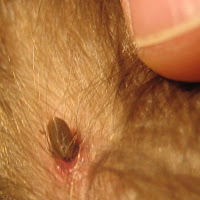A separate species from the black raven, white ravens are extremely rare. They are larger and more intelligent than their black counterparts, if that could be possible!
White ravens are known to have black or blue eyes, and therefore are not albino, but leucistic. Albinism occurs when one of several genetic defects where the body is unable to produce or distribute melanin, a natural substance that provides color to the skin; and leucism is a condition in which there is partial loss of pigmentation in an animal resulting in white, pale, or patchy coloration of the skin, a known phenomenon in nature. If the animal lacks all pigmentation and has pink eyes, it is an albino. If it lacks pigmentation in only some parts and does not have pink eyes, it is leucistic.
This usually arises when two common black ravens, with the same genetic defect, mate. The chances of this happening are rare, however, since they are monogamous and live long lives, there is a good chance they could produce successive generations of white ravens.
The white raven is highly regarded by many native cultures and has special spiritual significance.
Wisdom and subtlety of truth is attributed to the white raven; as well as introspection, courage, self-knowledge, healing, creation, rebirth, magic and mysticism, shape shifter, prestige and the complexity of nature.
Several legends credit the white raven for bringing light to the world by freeing the sun, moon, and stars, which were locked away by an evil being. In the course of its heroic deed the white raven was turned to black. The occasional sighting of a white raven is meant to remind people of how the world was saved for all mankind and animals of creation.
Bearing magic and mysticism, ravens have a long history of myth enshrouding them. Shamans know the power of an unexpected piercing sound in shifting consciousness. Ravens have this power, giving out varied sounds, and can assist us in shifting our consciousness into various dimensional realms. Hence one of the reasons why the raven is referred to as a shape shifter with magical powers.
Ravens are considered to be highly intelligent and clever mimics. They can mimic and use the calls of other species in their own vocabulary and can show us how to understand ‘animal language’.
The raven's black color is linked to darkness, the place where unconscious fear resides, and is regarded as a bad omen; therefore feared by many.
Like all wildlife and nature – ravens should be respected, rather than feared. Some refer to them as the keeper of secrets: a link to the void. Ravens are master magicians and represent transformational energy, revealing to us how to rid ourselves of our inner fears.
If a raven has flown into your life, magic and healing abound, awakening the energy of our will and intention. You have the ability to make great changes in your life. Raven are strongly linked with death and rebirth.
Remember not to be fearful of the raven, but rather to give thanks for the teachings he brings. The raven chooses its student according to their knowledge, and usually stays as long as needed to help transmute karma, returning you to the light.
Wisdom and subtlety of truth is attributed to the white raven; as well as introspection, courage, self-knowledge, healing, creation, rebirth, magic and mysticism, shape shifter, prestige and the complexity of nature.
Several legends credit the white raven for bringing light to the world by freeing the sun, moon, and stars, which were locked away by an evil being. In the course of its heroic deed the white raven was turned to black. The occasional sighting of a white raven is meant to remind people of how the world was saved for all mankind and animals of creation.
Bearing magic and mysticism, ravens have a long history of myth enshrouding them. Shamans know the power of an unexpected piercing sound in shifting consciousness. Ravens have this power, giving out varied sounds, and can assist us in shifting our consciousness into various dimensional realms. Hence one of the reasons why the raven is referred to as a shape shifter with magical powers.
Ravens are considered to be highly intelligent and clever mimics. They can mimic and use the calls of other species in their own vocabulary and can show us how to understand ‘animal language’.
The raven's black color is linked to darkness, the place where unconscious fear resides, and is regarded as a bad omen; therefore feared by many.
Like all wildlife and nature – ravens should be respected, rather than feared. Some refer to them as the keeper of secrets: a link to the void. Ravens are master magicians and represent transformational energy, revealing to us how to rid ourselves of our inner fears.
If a raven has flown into your life, magic and healing abound, awakening the energy of our will and intention. You have the ability to make great changes in your life. Raven are strongly linked with death and rebirth.
Remember not to be fearful of the raven, but rather to give thanks for the teachings he brings. The raven chooses its student according to their knowledge, and usually stays as long as needed to help transmute karma, returning you to the light.

















